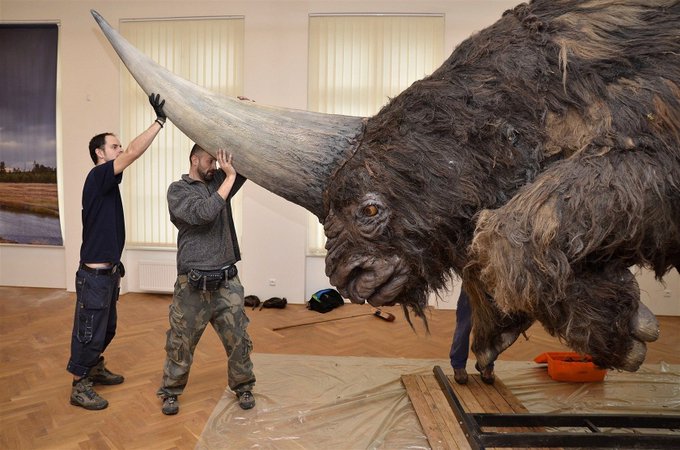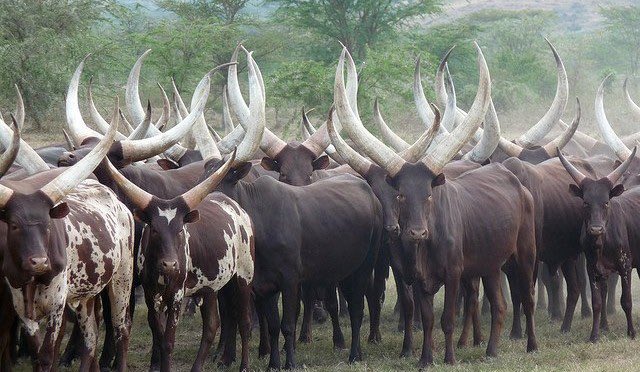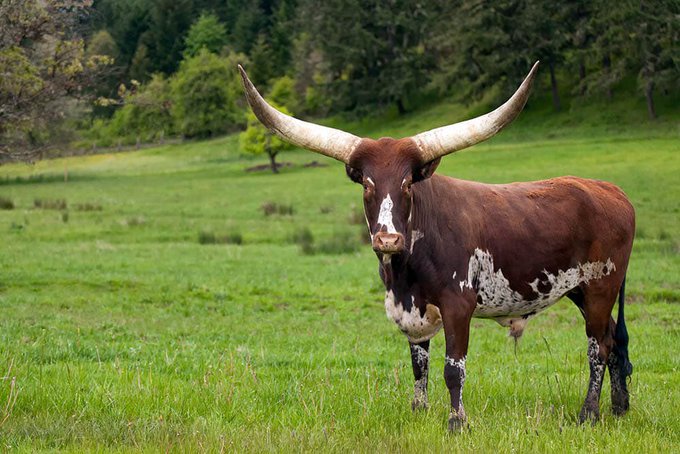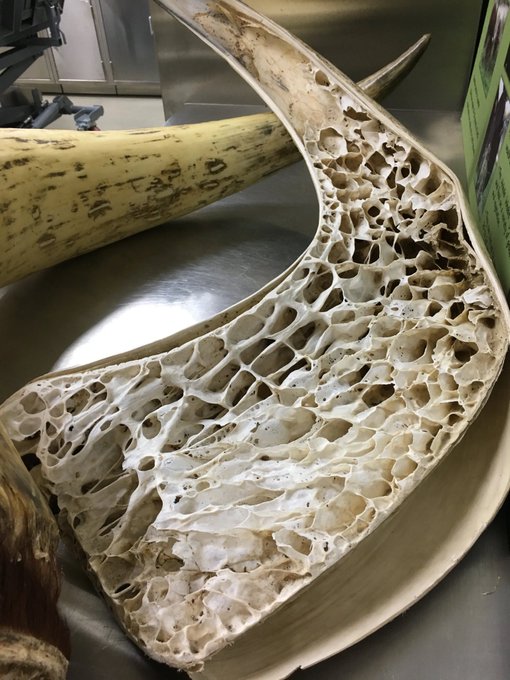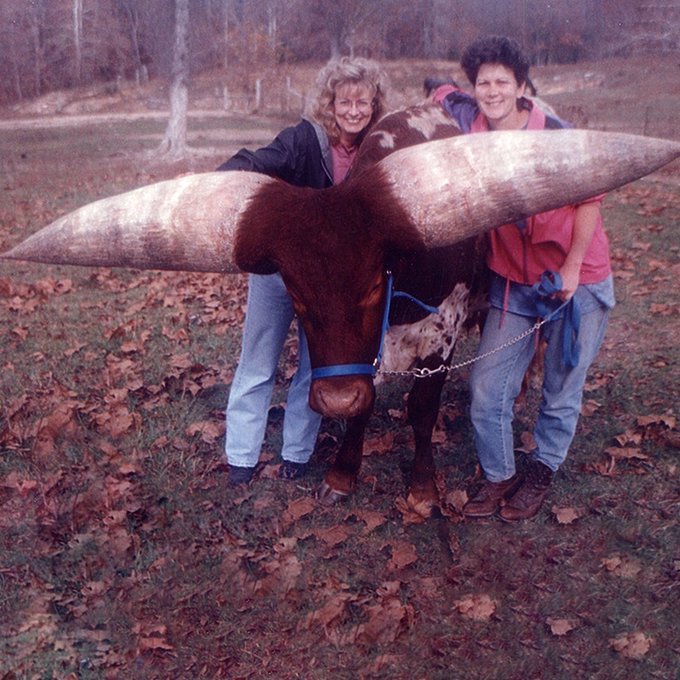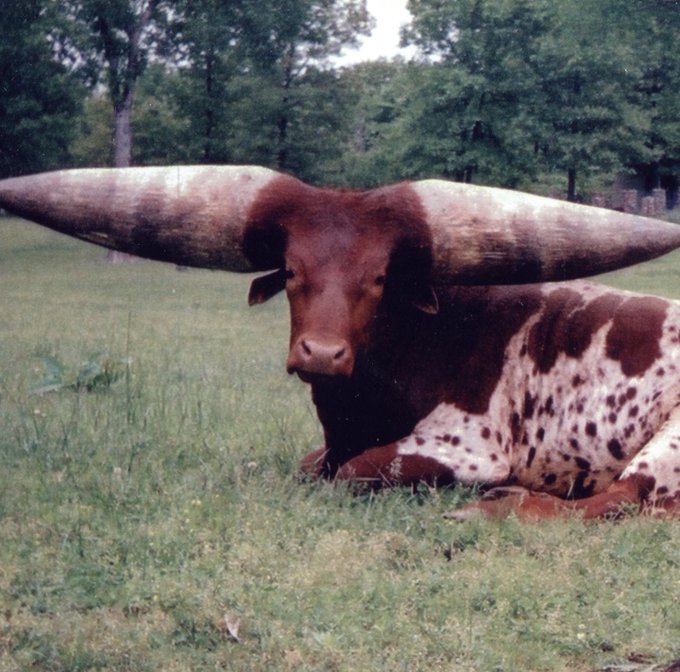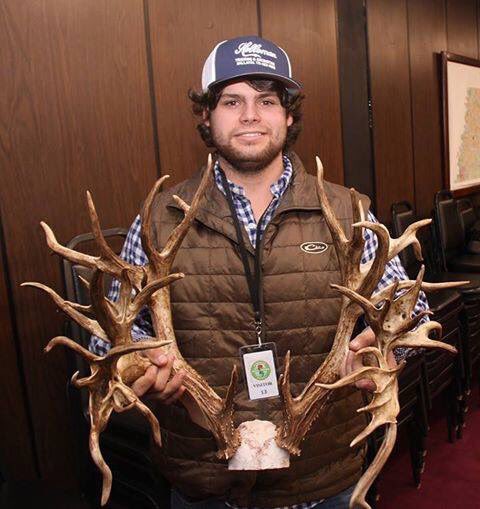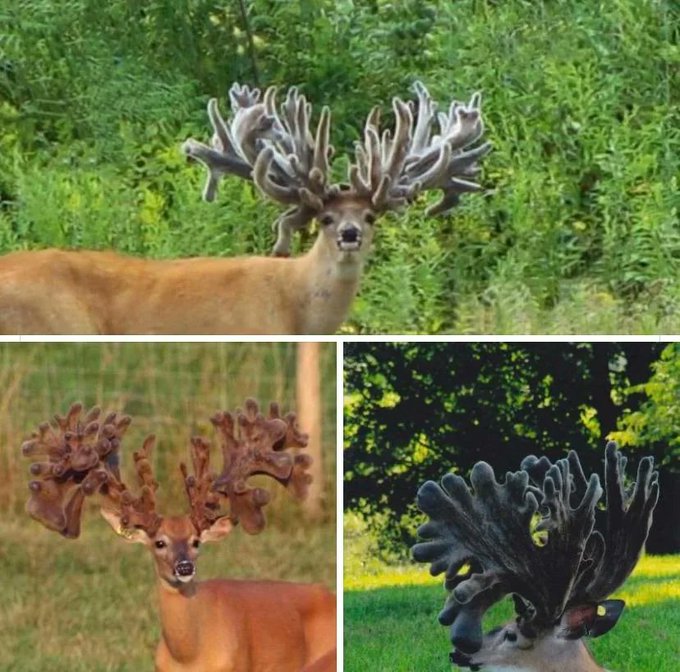Animals With The Biggest Horns In the World

September 26, 2024
•18 min read
Here are some animals with the biggest horns in the world.
Horns are an undeniably fascinating creature feature! Their sharp points and dangerous curves never fail to let you know exactly which end of the animal is dangerous. And the bigger they are, the more intriguing they can be. From curly crowns and girthy gizmo’s to unbelievably long lances, let's explore some of the hugest horns in the animal kingdom.
Saiga Horns
Native to the dusty plains of Kazakhstan, Russia, Mongolia, and occasionally Uzbekistan when they migrate, the Saiga is an utterly bizarre and delightful looking subspecies of antelope!
And at first glance, the only thing that outshines their wonderfully weird horns is that fleshy, double barreled nose. They use that wobbly snout to filter out dust from the air during the dry summers, and warm up cold air before it enters their lungs in the winter. But it’s those strange, almost carrot shaped horns, which only the males have that really make them stand out! Those can reach a huge 15 inches long, making them about the same height as a bowling pin! Sadly, those unique horns have made the males of that species a huge target for poachers. Although they’ve been hunted for centuries, the males have been relentlessly poached in recent years. And with so few males left in the wild, the Saiga’s birth rates have drastically dropped, leaving the species critically endangered! But what is it about their horns that makes them so alluring to poachers? Astoundingly, a single pair can be sold for a whopping $1,000 on the black market. Often, they’re shaved up and used in traditional Asian medicines to treat common ailments, like fevers and sore throats.Scimitar-Horned Oryx
You might never have seen or even heard of the Scimitar Horned Oryx before now. But that’s not because you missed some kind of memo, it’s because they’re almost extinct! That species of large antelope is native to the boarders of the Sahara Desert, and has a distinctively straight set of horns that like their name suggests, resemble sharp scimitar blades.
Even though the animal stands at an average of just 3.3 ft high, it’s huge horns can reach almost 4 ft long! They grow without any major curls straight out of the back of their skulls, which is something the ancient Egyptians took advantage of around 5000 years ago.The thing is, the Scimitar Horned Oryx were once domesticated by those ancient rulers, who would bind the oryx’s horns together so that they’d grow and intwine into a single horn! That would have made them look a bit like unicorns, and experts that believe that is where the origins of the common unicorn myth really began!
Markhor Goats
Sometimes called the "screwhorn" thanks to the spectacular spirals on top of its noggin, the Markhor goat lives among the mountains of Central Asia. During the summer, they can be found at amazing altitudes of up to 13,000 ft while they forage for nutrient rich grasses. But in the winter, they move down the mountainside to around 1,600 ft to avoid the deep snow.
Jacob Sheep
Jacob Sheep are a British breed of piebald sheep which class as a polycerate, which means "an animal with many horns" for those of us who don’t speak fluent biology. While they commonly sport 4 horns, they can have up to 6 bony spikes poking out of their skulls. And that’s not by mistake!
That now domestic breed of sheep comes from a primitive and prehistoric sheep breed, which have dominant genes when it comes down to the horns. That means four horned rams and ewes are more likely to produce four horned lambs, even if their mate doesn’t also have four. But if that gene is so dominant, why don’t all the sheep we see have some kind of four horned crown? That comes down mainly to farming practices. For many farmers, keeping sheep with four ramming weapons strapped to their heads, which can each measure up to 2 ft long would be a nightmare to wrangle! As such, that four horned fiend is less common, but is still arguably 4 times more badass than many other sheep!
Bighorn Sheep
When it comes to sheep with horns, very few can compete with the sheer girth that the aptly named Bighorn sheep brings to the table. Native to North America, the large, curled horns of the males called rams, can weigh up to a staggering 30 lbs. That’s more than all the bones in its body combined!
Valais Black Necked Goat
When you first look at the Valais Black Necked Goat, you might be mistaken for thinking their back ends have been dipped in white paint! But that distinctive coloring is all natural as are those horns on top of their heads.
Rasputin, a walliser blacknecked goat holds the world record for the largest horn spread. They're 53 inches wide!
Rhino Horns
It’s not just sheep, goats, and antelope that sport serious horns. Roaming rhinoceros arguably have some of the most famous horns in the world! And they grow those fantastical facial fonts thanks to their ancestor the Elasmotherium. That pre-historic giant is thought to have reached almost 10 ft at the shoulder, with a humongous horn that could measure over 6 ½ ft from base to tip!
Today I learned about Elasmotherium, and now I know Star Wars took place on our planet.
Ibex Mountain Goats
The brilliant, backwards curling horns of the Ibex mountain goats are impossible not to gawk at! Those colossal curves are shared by seven different types of ibex, all of which sit under the Capra genus, the same as the Markhor goats!
And just like the Markhor, those nimble creatures are adept at clambering over the steep, rocky terrains of mountains all over the world. But unlike the Markhors wide hooves, Ibex hooves have sharp edges and bowl shaped undersides that act like suction cups to help them grip the sides of the cliffs. Some, like the Alpine Ibex, are so adept that they can even climb up near vertical structures, like damns, to graze on essential salts and nutrient rich lichens! And that’s made even more impressive when you learn that it’s on those impossibly steep slopes that the male Ibex lock horns and fight for the right to breed with the females.Because of their precarious situation, instead of charging at one another, they’ll raise themselves onto their hind legs and smash their horns into their opponent. Obviously for the Ibex that means the bigger the horns, the better their chances of getting a girlfriend!Buffalo Horns
First off, let’s get one thing clear: a bison and a buffalo are two different animal's! Even though the bison is sometimes called an American buffalo, it belongs firmly in the bison species. Fortunately, real buffalos more than make up for that misnomer.
There are two separate members of the bovine family: the African or Cape Buffalo, and the Asian water buffalo. Standing up to 5 ft tall at the shoulder, and weighing up to 1,910 lbs, the African water buffalo is roughly the height and size of a small car! And can you believe its actually the smaller of the two?Its Asian cousin can reach a staggering 2,650 lbs, some of which comes from the weight of the truly colossal horns atop its head. Both males and females bear those incredible backwards curving horns, although the males are usually larger, and can spread upwards of a phenomenal 47 inches in total!Although back in 1955, the Guinness World Records recorded that one bull had a shocking span of 166 inches tip to tip making them the longest horns ever recorded! For a perspective, that’s about the same length as two Shaquille O’Neil’s laid end to end although, hopefully, they weighed a little less!Watusi Bull
Just about everyone knows that when it comes to cows, if you mess with a bull, you get the horns! But despite the utterly immense size of the African Watusi’s horns, you won’t have to worry about that bull being all that aggressive. Those incredible creatures are a domesticated breed of cattle that sometimes act more like dogs than they do cows!
One, named Oliver from Humble, Texas, is particularly fond of getting pats like a hilariously oversized Labrador! He’s particularly fond of having the back of his head scratched, as it’s one of the places on his body his huge horns prevent him from reaching!I learned today that the horns of Watusi Cattle are actually, partly, hollow! Which helps makes them lighter.
The largest horn circumference on a steer ever was achieved by Lurch, an African Watusi steer from Gassville, Arkansas, USA measuring 95.25 cm (37.5 in) on 6 May 2003 🐃 Although they are not the longest horns on record, Lurch's horn span was an impressive 2.1 m (7 ft).
Texas Longhorn
They say that “everything’s bigger in Texas”, and that’s proven by the existence of the Texas Longhorn no prizes for guessing where it gets its name from! Like the Watusi, those brilliant bovines are a domesticated breed of cattle. Although unlike their African counterparts, they’ve specifically adapted to the environment of North America.
But there’s one of them that really stands out from the rest of the heard! Poncho, an eight year old Longhorn who really lives up to the name of his breed! From tip to pointy tip, Poncho’s rack spans an impossibly impressive 10 ft 7.4 inches! That’s more than twice the width of a concert grand piano and is even wider than the Statue of Liberty’s face!Poncho Via, the Texas longhorn, just broke two world records for the size of his horns 🏆
Antlers VS Horns
Horns aren’t the only fancy headdresses in the animal kingdom. Antlers are a kind of paired, branched structure that also develop on top of a creature’s cranium. But where a horn has an outer layer made entirely of keratin, antlers are made almost completely out of bone.
The Tennessee Tucker Buck is now the pending non-typical world record whitetail! The 47 point rack scored in at 312 3/8 inches.
9. Deer with mutated antlers.
Bucks With Wild Antlers
Unfortunately, it’s not just bad breeding practices that can cause an animal to grow some seriously abnormal antlers! The hormone testosterone plays a huge role in antler development, with more testosterone giving the bucks bigger and stronger antlers in general.
Testosterone is primarily produced by the creature’s crown jewels. But if those are somehow damaged by trauma or disease, it can affect the deer’s testosterone levels. And the knock on effect that can have to their antlers is buck wild, to say the least.Without the yearly fluctuations of testosterone, the velvet on those antlers continues growing all year round, causing uncontrollable globs of velvet to merge and form strange cactus like structures. And what’s even worse is that without that crucial drop in testosterone at the end of the mating season, those antlers aren’t always shed!That can lead to years and years of velvet accumulation, like this poor buck in the picture below, clearly suffered from. It looks more like it’s wearing a British bearskin hat than a pair of antlers! They may not be the biggest, but they’re definitely some of the oddest animal headdresses you’ll ever see.Back on the deer project again at work, so expect a lot of weird pictures of messed up cervids this week.
Narwhals
Narwhals are, arguably, one of the most well known species inhabiting the deep blue sea, even though many people have never seen one! With its body reaching lengths of up to 20 ft long, the pretty, pale colored porpoise is a magical sight to behold. But the reason they’ve become so iconic is thanks to that huge spiraling horn jutting out the front of their heads.
While that peculiar protrusion has given the Narwhals the nickname of "The unicorn of the sea", it’s not as many people believe any kind of horn. It is in fact an overgrown spiralized tooth, so it’s closer to something like an elephant tusk rather than a rhino horn!Not only that, but narwhals can have two of those tremendous teeth, which can grow up to 10 ft long each. But what exactly does the Narwhal use them for? Amazingly, scientists don’t actually know. What they do know is that they’re incredibly sensitive, with up to 10 million nerve endings on the outside of each one. Some scientists believe that sensitivity can help them pick up changes in their environment, like shifts in the saltwater content of the frigid Arctic Seas or helping them find food. But others believe the tooth is used to attract mates, as it’s usually only found in males. It’s also been observed that Narwhals use their spear like tooth for hunting, although they don’t go around skewering their prey like a shish kebab!Video evidence shows male Narwhals swimming through the icy artic waters, flicking their horns into unsuspecting fish. Stunned, the fish remain motionless as the Narwhal proceed to gobble them up! But even then, growing a 10 ft horn just to tap a few fish seems like overkill, right? As such, scientists are still stumped as to the true purpose of the Narwhals tusk.










